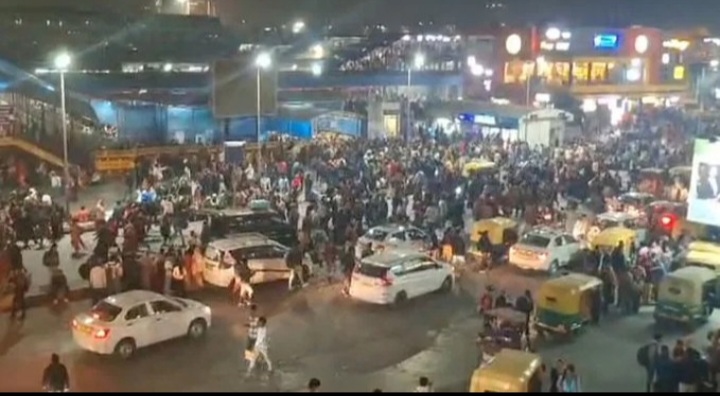New Delhi Railway Station Stampede: 15 Dead as Chaotic Platform Change Triggers Tragedy
"Train on Platform 12 Will Now Arrive at 16"—An Announcement That Cost Lives
New Delhi: A last-minute platform change led to a horrifying stampede at New Delhi Railway Station, killing at least 15 people, including 10 women.
As the announcement blared that a train expected on Platform 12 would now arrive at Platform 16, passengers rushed from both directions, creating a deadly crush in the absence of crowd control measures.
The tragedy unfolded as two Prayagraj-bound trains were already running late, leading to swelling crowds at the station.
The sudden directive forced hundreds to navigate the chaotic footbridges, with panic setting in as people scrambled to reach the new platform.
A survivor recounted the horror:
"There was no space to move. People were pushing from both sides. There were no railway officials to guide or control the situation. Suddenly, people started falling on each other."
Systemic Failure or Avoidable Disaster?
Platform changes at the last moment are a frequent occurrence in Indian Railways, but this incident exposes a glaring lack of infrastructure and planning.
While railway authorities routinely alter platform schedules to maintain efficiency, they fail to account for the risks involved in shuffling thousands of passengers through already congested stations.
Many argue that in such circumstances, delaying a train is a far safer option than abruptly changing its platform.
The absence of adequate signages, footbridges, escalators, and proper crowd management only worsens the crisis.
PM Modi Reacts, Big Action Likely
Expressing distress over the tragedy, Prime Minister Narendra Modi hinted at major action in response to the disaster.
Railway Minister Ashwini Vaishnaw is also under pressure to answer tough questions about safety protocols at major railway stations.
With thousands of passengers using New Delhi Railway Station daily, this incident serves as a wake-up call.
Will the Indian Railways finally prioritize passenger safety over operational convenience?
Or will this tragedy be just another footnote in the long list of preventable railway disasters?










